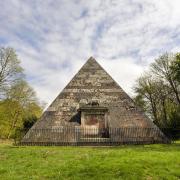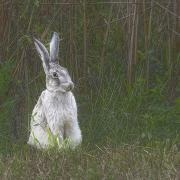Artist Gerard Stamp on how the countryside has changed, as seen through the eyes of our most famous painters

If you have ever wondered just how much our county has changed over the years, then I might have the answer. My talk Artistic Licence, given as last year’s CPRE Norfolk annual lecture, compared contemporary Norfolk and Suffolk landscapes to how they appeared in paintings up to 200 years ago.
Studying works by artists of the region, including Cotman and Constable, I was able to identify the exact position where each artist stood. I photographed the same view to see what had changed – and to check out how much artistic licence had been applied.
One obvious difference is that most of the tracks and roads featured in the paintings are now tarmacked. A good example is Rev James Bulwer’s (1794-1879) painting of Morston of around 1850, instantly recognisable and, apart from the road, essentially unchanged.
Another comparison using Sir John Alfred Arnesby Brown’s (1866-1955) painting The Crossroads, Haddiscoe c.1926, shows how many road signs we have allowed to proliferate on our verges, many repetitive and unnecessary. The clear view of the same artist’s painting of The Church on the Hill, Haddiscoe, c.1926 is now partly obscured by trees and scrub.
This is quite typical, and I pointed out exactly the same change elsewhere, such as with John Constable’s (1776-1837) famous Cornfield painted near Dedham in 1826. One theory is that much of the young saplings and undergrowth would have been collected and used for such things such as firewood, brushes and woven items, creating a much more open landscape.
Land enclosure, particularly in the 1800s where hedgerows were planted, would also have had an effect. The same effect can also be seen in other paintings such as in the Rev James Bulwer’s study of Stody (undated), or Miles Edmund Cotman’s (1810-1858) painting of Whitlingham Lane (undated). Close to Norwich where much of Mousehold Heath was lost to housing, I traced John Crome’s (1768-1821) painting of Mousehold Heath c.1818-1820 to somewhere in the middle of Silver Road.
Railways had their effect too. Bulwer’s 1840 painting of Beeston Regis church is barely recognisable; the railway arrived in 1887 and many seaside villas quickly followed. Now of course, much of the cliff top is covered by caravans.
However, artistic licence often came into play; John Sell Cotman (1782-1842) frequently altered the proportions of a church or hill to create a more picturesque composition. He even inserted a mountain into one of his paintings!
Constable added a distant church in The Cornfield where one doesn’t exist.
Beyond areas of urban sprawl I believe that a good proportion of our landscape lies unchanged, other than with a higher level of vegetation and a proliferation of road signs, and therefore it’s doubly important for the future of Norfolk landscapes that we continue to work for their protection to ensure the beauty of the Norfolk countryside for future generations.
My whole illustrated lecture can be viewed on YouTube. Watch below:
CPRE Norfolk Ambassador
__________
Gerard Stamp Norfolk artist and Ambassador for Campaign to Protect Rural England Norfolk



























